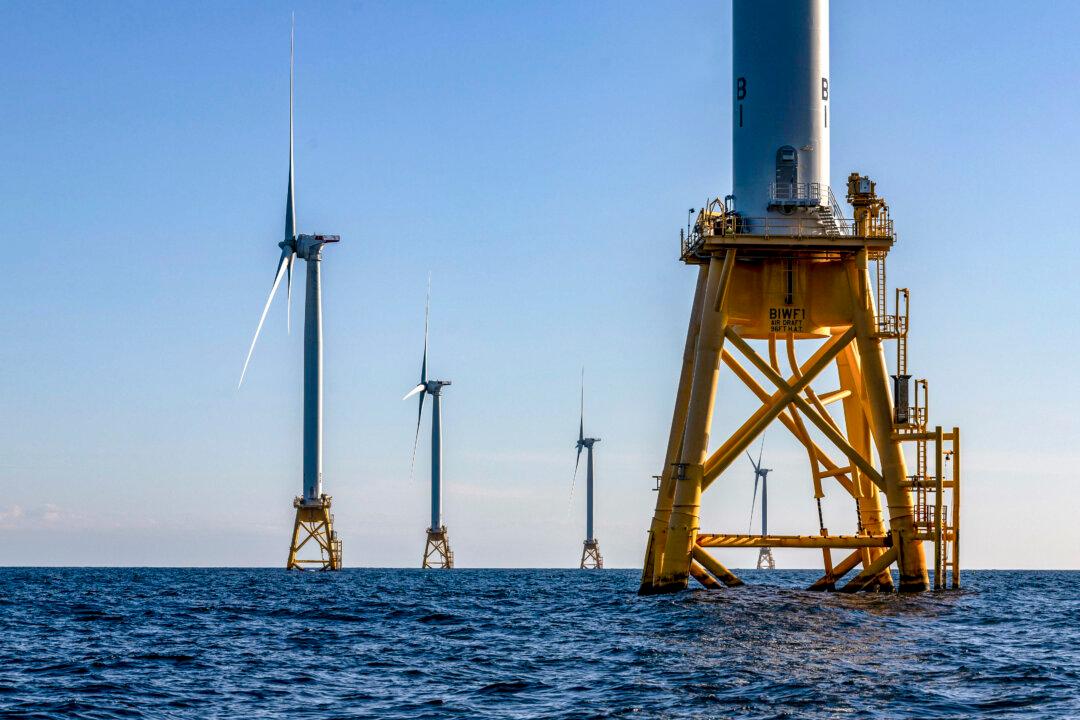A growing chorus of interest groups is calling for a pause in offshore wind activities to allow further assessment of the sector’s effects on the marine ecosystem.
Rep. Jeff Van Drew (R-N.J.) introduced a congressional resolution on March 21 to halt work on East Coast offshore wind projects until there can be investigations into their possible effect on marine mammals.Fishing groups and local residents have filed five lawsuits against wind projects that have been proposed or are under construction along the Atlantic seaboard.
A leading body for the U.S. Pacific fishing industry is urging the federal government to call off its proposed auction for offshore wind off the Oregon coast.
And the United States’ largest lobbying group for Native Americans recently called for a halt to all offshore wind scoping and permitting.
Driven by Whale Deaths
An uptick in marine mammal deaths along the north Atlantic has been cited as reason for concern.Since December 2022, 29 whales have died on the East Coast, and 14 dead dolphins have washed ashore in New Jersey in the past month, including eight on March 21.
Van Drew believes that the survey and construction work associated with wind farms, which can reportedly damage dolphin and whale hearing, may be to blame.
The National Oceanic and Atmospheric Administration (NOAA) has said its marine mammal stranding network hasn’t linked any of the whale deaths to offshore wind technology.
Van Drew said the NOAA and the Bureau of Ocean Energy Management (BOEM) have approved “these massive construction projects right in the middle of whale feeding and breeding grounds, as well as migration routes.”
BOEM has already leased 2.3 million acres and plans to lease another 1.7 million to install an estimated 3,500 turbines on the Atlantic coast.
“We are not even in the construction stage of these industrial wind turbine grids, yet we are already witnessing a highly unusual mortality rate of these intelligent marine animals,” he told The Epoch Times.
“We need a moratorium on all offshore wind projects before this gets worse, and I have introduced a resolution calling on Congress to do just that.”
“Lease areas sit along known migration routes and foraging areas of North Atlantic right whales, humpback whales, and economically important commercial and recreational fish species,” it added, noting that cables will require dredging along hundreds of miles of ocean floor.
Rep. Andy Harris (R-Md.) supports Van Drew’s resolution.
“Since BOEM began authorizing testing for offshore wind project developments, we have witnessed an uptick in whale deaths,” including one recent whale death on Assateague Island in Maryland, Harris told The Epoch Times in an email.
“We need to take the time to gather proper scientific data, act in full transparency, and not rely upon platitudes for these projects, their construction, and the impact they may have upon our environment.”
Agency officials have since said an initial necropsy indicates that the whale death on Assateague Island is consistent with a vessel strike, after observing blunt force trauma on the nearly 34-foot female.
According to Sarah Wilkin, NOAA’s Marine Mammal Health and Stranding Response Program coordinator, there has been an “unusual ongoing mortality event since 2016 that is specific to the humpback whales,” and there has been a similar increase in deaths of endangered North Atlantic right whales. Researchers are unsure of the cause of the spike in mortalities.
Although no deaths have been linked to the offshore wind farms, according to NOAA, a better understanding of the potential effects of the wind projects planned off southern New England will be crucial to protecting the endangered right whale, which is increasingly inhabiting the same waters.

Back to the Drawing Board
The Pacific Fishery Management Council is urging BOEM to rescind the current Oregon lease areas designated for floating offshore wind energy development in the Pacific.The council passed a resolution at its March 10 meeting recommending that BOEM restart the process of identifying suitable areas for installing offshore wind turbines to account for the needs of the fishing industry.
BOEM announced in April 2022 that it would lease two areas for offshore wind development off the Oregon coast. In the coming year, it plans to auction 1.15 million acres starting 12 miles offshore along the south-central and southern Oregon coast.
Acknowledging the risk to marine life—including that of whales becoming tangled in the moorings and cables associated with floating wind platforms—federal agencies have commissioned more than a dozen studies of the environmental, economic, and social impact of large-scale development along the Pacific Coast.
But the Pacific coast leasing areas were selected before the studies were complete.
Native Concerns
Meanwhile, Native American tribes claim they have been left out of the process.The nation’s oldest association of American Indian and Native Alaskan tribes has called for a moratorium on offshore wind development along U.S. coasts, insisting that the Biden administration do a better job protecting tribal interests.
The National Council of American Indians issued a resolution on Feb. 24 asserting “shared tribal jurisdictional authority over and tribal management of offshore renewable energy activities, aimed at empowering Native communities through socio-economic benefits such as job opportunities, revenue sharing, and support for tribal energy development projects.”
It urged the Department of the Interior and BOEM to “halt all scoping and permitting for offshore wind projects until completion of a comprehensive and transparent procedure adequately protecting tribal environmental and sovereign interests is developed and implemented.”





